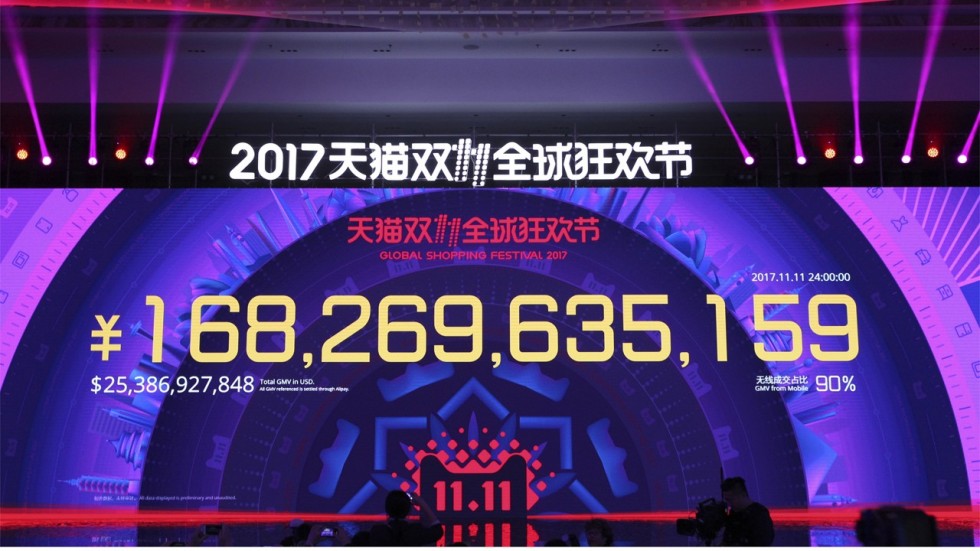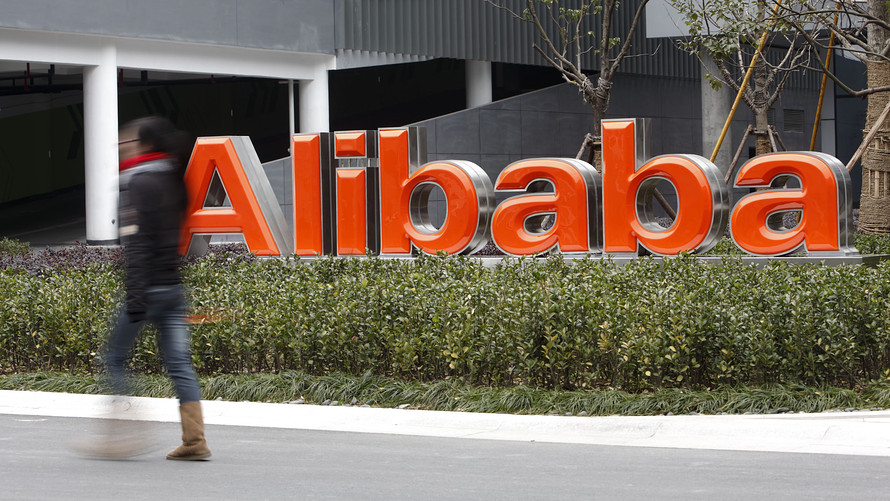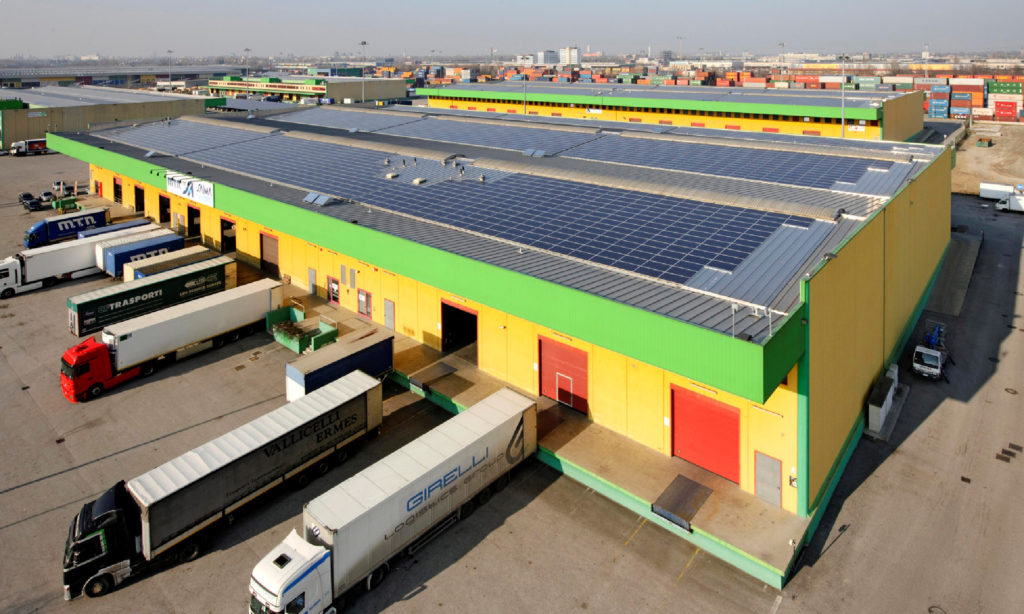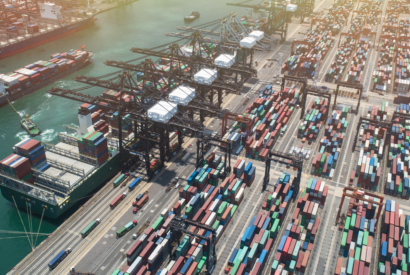Thought leadership in the supply chain sector today is buzzing with ideas, but forget big data, drones and driverless cars. You should be sharing logistics with your biggest rival – and here’s why.
Picture a road leading into a city. The road is clogged with cars, lorries and vans of all sizes – none are moving. Each vehicle has somewhere it needs to be, but none are reaching their destination any time soon. A line of lorries pulling trailers stretches along the outside lane.

On average those trailers will be less than 60% full – and even worse, 20-25% of them will be completely empty. (1)
In 2016, roughly 25,000 Large Goods Vehicles (LGVs) made a trip across the heavily trafficked streets of central London. If each one of these LGVs was full to maximum, UK law dictates they would be allowed to carry 40 tonnes of goods. If 40% of that space went empty, that means an extra 400,000 tonnes of goods could have crossed the streets of London last year. If only they could have been loaded onto trips that would have been made anyway.
The same story is happening all the across the world right now. And it’s only going to get worse – data models created by the U.N. predict 70% of the world’s population is projected to live in urban areas by 2050. (2)
Reaching your customers using individual relationships with fleets of vehicles and warehousing sites is an inefficient way of operating in today’s world. In tomorrow’s world, it will be completely unsustainable.
Thought leadership in the supply chain sector today is fizzing with ideas about taking advantage of solutions to this that are far from being viable or applicable. Drones are in their infancy, data scientists are still grappling with big data and logistics won’t be ‘uberised’ for years.
The ideas are intriguing, but they fail to bridge the gap between today and tomorrow.
 Let’s consider the world’s biggest online shopping day; Single’s Day in China. This retail behemoth had a low key start as an anti-Valentine’s Day in the 1990s when students started celebrating their singledom. It’s now become a day when everyone, regardless of their single status, buys themselves gifts and we’ve all heard the stories of how wildly successful it has become.
Let’s consider the world’s biggest online shopping day; Single’s Day in China. This retail behemoth had a low key start as an anti-Valentine’s Day in the 1990s when students started celebrating their singledom. It’s now become a day when everyone, regardless of their single status, buys themselves gifts and we’ve all heard the stories of how wildly successful it has become.
On this year’s Singles Day, e-commerce giant Alibaba (China’s Amazon equivalent) smashed its record with a 39% year on year growth. The numbers are mind-blowing: they sold $25.3bn worth of product, with 812 million orders, 1.5bn transactions, 140,000 brands and 15 million product listings. (3)
We’ve also heard of the logistical nightmares caused by attempting to manage next day delivery for millions of Chinese customers in urban areas.
 This year the logistics arm of Alibaba, Cainiao, is following Amazon’s lead and tackling the problem head-on with a series of logistical planning exercises. One idea has been to install 200,000 parcels pick up boxes and establish hundreds of thousands of service stations across China where consumers can collect goods they ordered online.
This year the logistics arm of Alibaba, Cainiao, is following Amazon’s lead and tackling the problem head-on with a series of logistical planning exercises. One idea has been to install 200,000 parcels pick up boxes and establish hundreds of thousands of service stations across China where consumers can collect goods they ordered online.
Alibaba’s initiative shows us that the challenge of ‘last-mile delivery’ to individual customers cannot be overcome using traditional supply chain transportation, especially given the figures for projected growth in urbanisation .
You might say you’ve already got locations like these set up. You might also say smaller retailers, even with locations like these, will never be able to replicate Cainiao’s logistical capabilities. Here at CMG we say you can, by working together. You can match Alibaba’s customer service levels without having Cainiao’s logistical capabilities. Retailers and distributors without the capability to build parcel pickup locations should be going to those that do and buying their extra space – and this is just the tip of the iceberg.
 By working together, retailers and their suppliers can establish what thought leaders are calling a ‘Logistics Hub’. This is a distribution centre operated collaboratively between suppliers and a retailer. One key benefit of this approach is improved inventory visibility on both sides, which will facilitate higher delivery frequency in and out of hub.
By working together, retailers and their suppliers can establish what thought leaders are calling a ‘Logistics Hub’. This is a distribution centre operated collaboratively between suppliers and a retailer. One key benefit of this approach is improved inventory visibility on both sides, which will facilitate higher delivery frequency in and out of hub.
However, the challenge is that visibility between supply chain partners is often seen as undesirable. Retailers may argue that sharing so much data with their suppliers could affect potential deals made in the future. However, we think the benefits outweigh the costs by far – and besides, working together is unavoidable if you want to reach urban customers using roads in the future.
As the annual challenge of Black Friday is upon us once again, the supply chain certainties of the past are no longer relevant. The usual ways of delivering goods to the customer is now no longer straightforward – or even viable – when operating in dense urban areas where lorries are stuck in endless traffic jams but next day delivery is expected as standard. Retailers must consider new ways to get the goods to the customers – even by switching it around and getting the customer to the goods – in order to produce scalable delivery models.
Creatively collaborating with your suppliers and abandoning the certainties of yesterday will result in a more agile supply chain which will build for the future. Remember, 25% of trailers crossing London today are empty – think how many goods could have been carried in there if the right agreements and processes had been in place.
by Matt Gherardi




